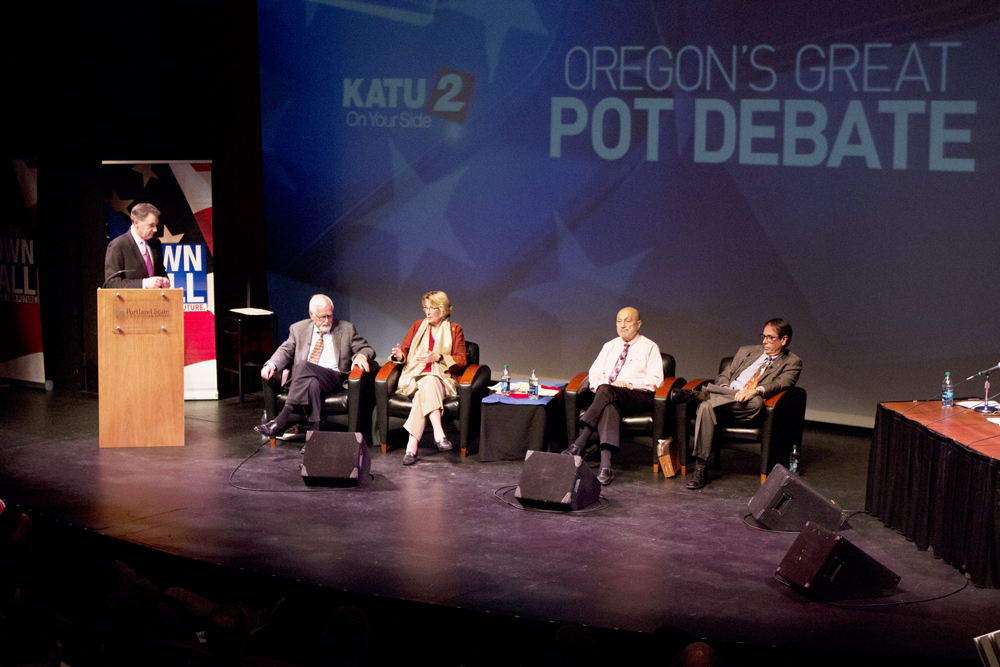Ethanol is cheap, easy to make and abundant, since it is made from vegetation. It’s environmentally friendly and can help America curb its addiction to foreign oil. Or at least that’s what the General Motors Company want you to think with their “Live Green: Go Yellow” ad campaign.
The old bait and switch
Ethanol is cheap, easy to make and abundant, since it is made from vegetation. It’s environmentally friendly and can help America curb its addiction to foreign oil. Or at least that’s what the General Motors Company want you to think with their “Live Green: Go Yellow” ad campaign.
But in reality, the story is a little different than the picture they’ve painted. It is true that ethanol is fairly easy for America to produce. Right now we produce the majority of our ethanol from corn, of which we grow plenty. We can power our cars, after minor modifications, on an ethanol/gasoline mixture called E85. E85 is a mixture of 85 percent ethanol and 15 percent gasoline. But ethanol will never replace gasoline in the United States or significantly reduce our dependence on foreign oil. No, E85 is simply another bait-and-switch tactic perpetrated by America’s largest automakers.
Let’s say, hypothetically, that America was to try to replace most of our gasoline with E85. According to an article published on thetruthaboutcars.com, in order to do so we would need to “convert 140 million acres to switchgrass” (reportedly a more efficient source for ethanol), which is “about twice the acreage currently devoted to corn and a landmass nearly the size of Texas.” This option is clearly not feasible. Your car, powered by E85, would also be less efficient. According to caranddriver.com, for one gallon of gasoline you would need 1.48 gallons of ethanol to match gasoline’s energy potential. Since ethanol contains less energy, powering your car on E85 would bring down your average miles per gallon by 28 percent compared to gasoline, according to the Environmental Protection Agency’s estimate. GM cleverly leaves these facts out of their ad campaign.
If ethanol is clearly not a viable option for American consumers, then why is GM pushing for increased flex-fuel vehicle sales? The simple answer is fuel economy regulations. The National Highway Traffic Safety Administration’s Corporate Average Fuel Economy (CAFE) demands that automakers’ average fuel economy be at least 27.5 mpg. If automakers make their most gas-guzzling and incidentally most profitable vehicles E85 compatible, and call them flex-fuel vehicles because they can be powered by either traditional gasoline or E85, they stand to surpass the CAFE requirements and save on average $200 million in fines annually. This works, because if an automaker produces a flex-fuel vehicle, then CAFE makes the assumption that it will be powered by E85 half of the time. By that conclusion, the 2007 Chevrolet Tahoe flex-fuel vehicle’s mpg rating was 33.3 mpg, compared to the 20.1 mpg that the gasoline-powered Tahoe received. In addition, flex-fuel vehicles only make up 2 percent of the vehicles on the road today.
But the assumption that flex-fuel vehicles will be powered by E85 half of the time is unrealistic, due to the fact that the majority of E85 fueling stations are located in the Midwestern (i.e., less populated) states. Although there are two E85 stations in Oregon, one of which is located in Portland, very few people own flex-fuel vehicles and even fewer still are going to go out of their way for a more expensive, less efficient fuel.
Ethanol is also less reliable than gasoline at lower temperatures. In tests performed by the Department of Energy (DOE) in 1999, a Ford flex-fuel vehicle powered by E85 was unable to start at -15 degrees and then again at -20 degrees. This same vehicle, however, started promptly at these same temperatures while running on gasoline alone.
It is also believed that ethanol is better for the environment than gasoline, which is not entirely true. According to the DOE, E85 burning compared to normal gasoline burning does reduce nitrous oxide emissions by 59 percent and carbon monoxide by 4 percent. But it raises total hydrocarbon emissions by 43 percent, and hydrocarbon exposure can have a narcotic effect, which causes people to act irrationally. More importantly, however, hydrocarbon can contain benzene, which is carcinogenic.
In the interest of saving money, General Motors has sold us short. CAFE ratings were put into place to help make America’s automakers become more fuel-efficient and potentially help us become less reliant on foreign oil. But with a mere $150-per-vehicle cost increase in fuel system modification, GM is able to save millions of dollars and avoid true reformation of their highest-gasoline-consuming vehicles.
And although America’s corn industry stands to profit off of the increased production of ethanol, it is feared that, like the hydrogen-powered vehicles, ethanol and more specifically E85 is a bait-and-switch tactic. It is designed to, at face value, help the environment and American farmers, but in reality just gives automakers and oil companies a chance to look better in the public eye while saving money. If you are really interested in “living green,” don’t waste your time and money on E85; you’d be simply appeasing the General Motors Company.




